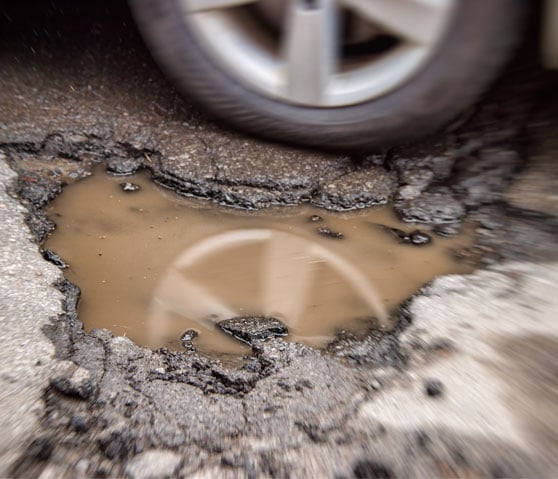Whether using cars or public transport, people routinely complain of deteriorating road conditions and chaotic traffic. In particular, potholes, ruts, and poorly planned speed breakers are pet peeves.
For years, the road transportation industry has been plagued by high upkeep costs, stressful traffic conditions, and frequent accidents. The National Safety Council reported 38,300 deaths and 4.4 million injured on US roads alone in 20151. More recently, in 2017, India saw 3,597 deaths caused by bad roads as opposed to 803 deaths because of terror-related incidents.2
Poor road surface conditions typically lead to more wear and tear and breakdown of vehicles. Potholes are a major reason for the axle and suspension failure that accounts for a third of mechanical issues on UK roads. These failures cost car owners in Britain an estimated £2.8 billion every year, and authorities pay over £30 million in compensation claims due to poor roads.3
Without some form of maintenance, any road can deteriorate into becoming unusable. Since road networks are typically long and may include roads with varying characteristics, efficient maintenance cannot occur without comprehensive planning. Planned and proactive road maintenance is necessary to keep roads safe, accessible, and in acceptable condition.
Leveraging technology for safer, more efficient roads
There are two approaches to maintaining roads—either you address the damage that has already occurred thus being reactive, or you try and prevent the damage from occurring in the first place as a proactive measure. Advances in analytics, cloud-based mobile technologies, and the Internet of Things (IoT) are making it possible for authorities to adopt the latter approach. It not only helps them avoid accidents caused by poor road conditions but also creates more cost savings that can be diverted toward road maintenance.
Predictive analytics uses statistical and data mining techniques to analyze historical and current data sets, create rules and predictive models, and predict future events. Data can be gathered and processed in near-real-time to provide reports for better decision-making on maintenance schedules.
How is such data sourced? Already, smartphones and cars today come with sensor-based devices and GPS navigation systems. The data gathered by them can be leveraged to precisely identify areas that have potholes or undulations and need repairs. Tracking the drive quality of vehicles and recording the severity of the smallest of craters also help to repair them in time—before they turn into car-breaking ruts. Early detecting and fixing also help keep the repair costs low.
Processing techniques
Due to the complex environment in which they operate, and the precision of sensor devices, there may be some noise in the data collected. However, this can be eliminated using outlier removal methods of data cleaning. Interpolation of data points can also be applied to improve the completeness of data wherever there are gaps. The gathered data is processed, classified, and labeled by machine learning algorithms, and published on a regular basis as near-real-time road health analytics data. Furthermore, the processed information can be uploaded to a central repository that helps the authorities make informed decisions on road maintenance and repair.
Road networks are huge, and to derive maximum predictive maintenance benefits with this approach, data should be sourced collectively from sensors embedded in a variety of systems—such as public transport fleets, vehicles managed by cab aggregators, or sat-nav manufacturing companies. Also, crowdsourced data from social media such as Twitter or smart city citizen apps for geotagged imagery and issue reporting can also be leveraged to validate the sensor data.
The road to the future
Incorporating data analytics directly into roadways is complex to envisage because roads are considered to have little or no link with IoT or networked devices. However, efforts to construct “smart” roads that have data collection tools are slowly materializing. Some city routes have been retrofitted with sensors to gather vital information required for early maintenance. Sensors can also monitor changes in traffic patterns and traffic loads on a road.
The roads of the future are expected to take their maintenance processes a step further by embedding interconnectivity in their design. With more intelligent and robust sensors, backed by advanced analytics, authorities will be able to monitor all changes in real time. It will help them to make better decisions on road maintenance, feature enhancement, and traffic control.
Cyient has been building comprehensive solutions for the development of smart cities and transportation systems. We have leveraged cloud-based technologies and machine learning algorithms to deliver information on the most current and hyper-local road conditions. The efforts to improve road conditions and prevent accidents can now be strengthened with such predictive analytics tools for maintenance and planning.
Download our brochure on "Reduce Road Maintenance Costs and Improve Drivability and Safety".
Sources:
1- http://www.newsweek.com/us-traffic-deaths-injuries-and-related-costs-2015-363602
2- TOI report 21/07/18
3- https://www.potholes.co.uk/facts












Let Us Know What You Thought about this Post.
Put your Comment Below.